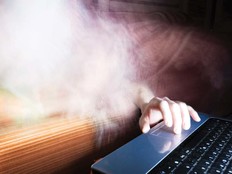The University of Utah’s New UOnline Exam Center Enhances Online Learning
Online learning typically isn't associated with crowds, long lines and paperwork, but until recently that's what the University of Utah's online students had to contend with on exam days.
"We have very high demand for online classes here, but our faculty were also very concerned about academic integrity. In order to get their buy-in, we agreed to provide a proctored testing environment for online students," says Cory Stokes, executive director of teaching and learning technologies at the University of Utah in Salt Lake City, which saw 8,000 students enrolled in 400 online courses this semester.
So on test days (either Thursday evenings or Saturday mornings), online students would go to one of several designated auditoriums on campus, then wait to check in at a registration table before they could sit down with a paper test under the watchful eye of a test proctor.
"It wasn't the best experience for anyone," Stokes admits, noting that although 80 percent of online students also take on-campus classes, they were frequently confused about where their exam would take place and stressed by sitting elbow to elbow with hundreds of fellow test-takers.
This past February, that experience changed permanently when the school unveiled the University of Utah UOnline Exam Center. Located in what was once an abandoned storeroom inside the university's main library, the center is now open six days a week and features 112 Lenovo M72e ThinkCentre workstations. A large number of the online course exams are now computer-based, and over the next few years the new facility will enable most classes to move completely to computer-based testing.
Moreover, the school's course management system is able to grade the multiple-choice exams. If a professor gives permission, students are even provided with their scores before they walk out of the exam center, Stokes says.
Proctors can also sit at their own workstation and — using LanSchool classroom management software — continuously monitor all test-taker screens.
"If we catch someone cheating, we can take control of their screen, freeze it, take screen shots, all kinds of cool stuff," says Sydney McCann, a paid UOnline Exam Center proctor and a full-time business student at the university. "It makes our job a lot easier."
Small, but Mighty
"We realized that putting in over 100 standard desktop computers would generate so much heat that we would have to make highly expensive modifications to the existing air conditioning system that would take us beyond our budget, and we really did not want to have to do that," Stokes says.
His team initially considered using tablet devices as a way to overcome budget and air conditioning limitations, but the tablet software did not provide the programming control necessary to meet stringent proctoring requirements, such as locking out a student's ability to visit Wikipedia or other informational websites or use a digital calculator. Fortunately, they found another option: The Lenovo ThinkCentre 1L M72e tiny form factor — a Windows-based computer with extremely low power requirements.
"The processor is so small that it can be mounted under a desk, and often our students don't even know where it is," Stokes says. "Plus, it was very, very affordable."
6.7 million The number of U.S. college students who took at least one course online during the fall 2011 semester, an increase of 570,000 over the previous year
SOURCE: "2012 Survey of Online Learning" (Babson Survey Research Group and the College Board, January 2013)
To make the most of the facility's one dedicated IT staffer, Stokes and his team outfitted each workstation with Altiris Client Management Suite 7.1, which provides the ability to configure, control and maintain all test-taker workstations from a single centralized image. A custom-built scheduling application also allows students to go online, view the exam schedule and reserve a seat. The facility uses the same program to move test-takers through the registration process quickly.
As a result, exam center officials can now serve up to 800 test-takers a day, a capacity that will enable the school to accommodate their expected 20 percent annual growth in online enrollment.
All Upside
The University of Utah UOnline Exam Center has been open only a few months, but faculty and students have been overwhelmingly positive in their feedback.
"It's a significant step up for everyone involved," says University of Utah Professor Charles Atwood, an expert in computer-based testing and assessment in the sciences.
Although he doesn't teach online courses, Atwood now requires his general chemistry students to take all midterm exams in the new exam center.
"It's easier on the students, it's easier on the faculty, and it's much easier to keep an eye on what students are doing and make sure that the test integrity is maintained," he says. "There's no downside. I absolutely love it."
Extra Credit
The University of Utah UOnline Exam Center provides benefits beyond the improved exam day experience for online students, including:
- A reduced environmental footprint: Cory Stokes, executive director of teaching and learning technologies, says the university used about 2 million pieces of paper, about 15 tons, to support testing for online coursework between 2005 and 2012. Now that the center can administer computerized exams, faculty are encouraged to offer them, in the hope of significantly reducing or eliminating paper testing over the next three years.
- Improved reputation: In post-course surveys before the UOnline Exam Center was built, the online testing experience was a definite drag on student satisfaction scores and their willingness to recommend online coursework to a friend. "By lowering their stress levels and making it a good, comfortable experience for them, we think they'll spread the word about the online program, and we'll hopefully see greater participation in online classes," Stokes says.
- Improved content: Charles Atwood, professor of chemistry and an expert in computer-based examination and assessment, will be analyzing his students' computerized test answers with an item response theory program to determine which topics they are struggling with the most. "We'll be able to use this as a continuous-feedback loop, to constantly assess where our students are in certain areas and change our instruction accordingly as a way to improve the overall performance," says Atwood, who is planning to offer the IRT program to the College of Science, as well as other academic departments.
- Easy scalability: Instead of finding and equipping another auditorium to accommodate demand during peak testing periods (such as final exams), the exam center can increase its capacity by simply extending its daily hours.
- More equitable test results: The center is working to develop computer-based exams that feature essay questions in addition to multiple choice, as well as the ability to automatically grade them. Atwood says that will give students "a fair shake" with such questions because it does away with the sometimes uneven grading that can result when more than one teaching assistant is involved.
Exam Center Do's and Don'ts
Do research all options.
University of Utah officials took the time to sit down and engage with all of their technology providers to gain a big-picture view of what was possible. In doing so, the planning team was able to "come up with the best possible solution and also get some significant savings," Stokes says.
Do leverage what's on hand.
Instead of buying a new software program to help faculty members create computer-based exams, Stokes and his team avoided an additional cost by relying on the testing features included in the university's existing course management system.
Don't overlook small details.
To take a proctored exam, students must leave backpacks and other belongings outside of the testing area. The only problem: Stokes and his team forgot to outfit the center with secure lockers.
"We just didn't think about that aspect, and now we have to go buy some," he says. "That was our biggest glitch."
Don't automatically go for the glitz.
Stokes says university officials initially were excited by the idea of installing the latest and greatest tablet devices available, but ultimately they opted for solid over trendy.
"When we realized that tablets were not going to create the testing experience we needed, we also realized that it was OK not to be doing the latest, greatest and coolest thing but instead doing the right thing that would work for us," he says.






